In the last episode of this series, we looked at two popular sixteenth century texts on statics, the oft published and widely read pseudo-Aristotelian Questiones Mechanicae, and Guidobaldo dal Monte’s highly influential Mechanicorum liber. Today we are going to leave Italy and travel to The Netherlands to look at the work on statics of the Flemish polymath, Simon Stevin (c. 1548–1620).
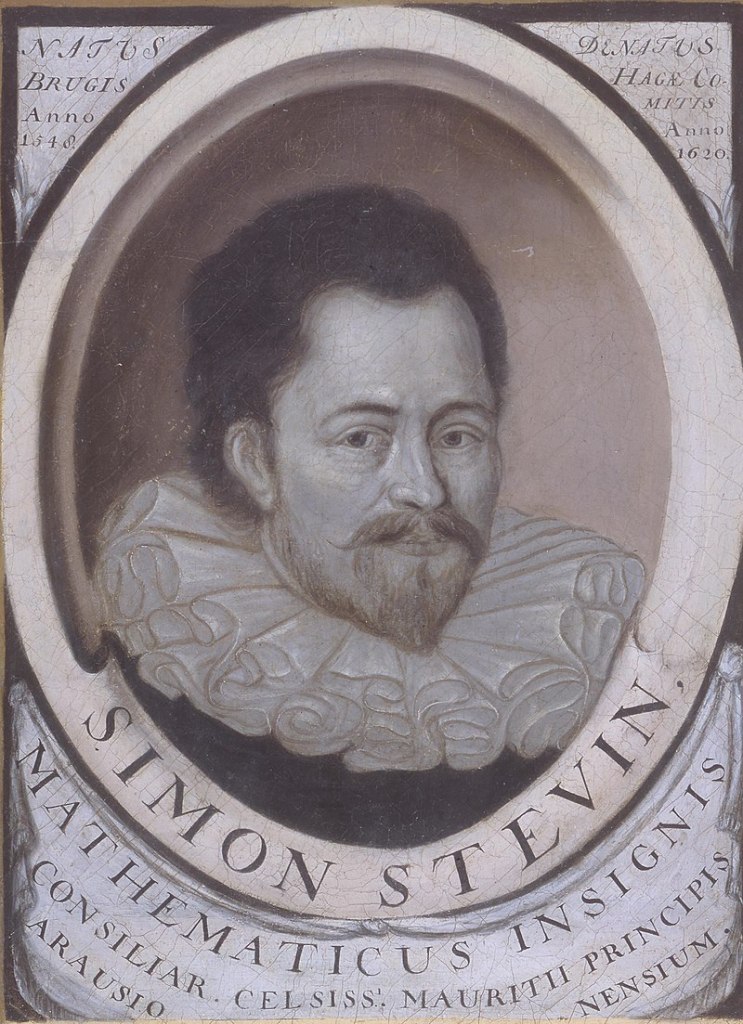
Stevin is usually referred to as an engineer his principle occupation but he was also a mathematician, physicist, inventor, music theorist, political advisor and army quartermaster. Stevin’s published works include books on mathematics, mechanics, astronomy, navigation, military science, engineering, music theory, civics, dialectics, bookkeeping, geography, and house building. Simon Stevin was the illegitimate son of Antheunis Stevin and Cathelijne van der Poort probably born in Bruges around 1548. This and the fact that he seems to have come from an affluent background and was apparently well educated are all we know about his origins. He worked as a clerk, travelling throughout northern Europe before he, already over thirty went into formal education in Leiden in 1581. After two years attending Latin school he entered the only eight years old Protestant University of Leiden, where he stayed until 1590, apparently without graduating.
At the university he became friend with Maurits van Nassau (1567–1625), son of Willem van Oranje (1533–1584), who led the revolt against the Spanish Habsburgs in 1580 setting off the Eighty Years War and was appointed Stadholder of Holland. Maurits succeeded his father as Stadholder of Holland in 1585 and became Stadholder of Utrecht, Guelders and Overijssel in 1590, and of Groningen in 1620. Stevin became advisor and tutor to Maurits on technological and scientific subjects. In 1600, at the instigation of Maurits, Stevin established a school of military engineering at the University of Leiden.
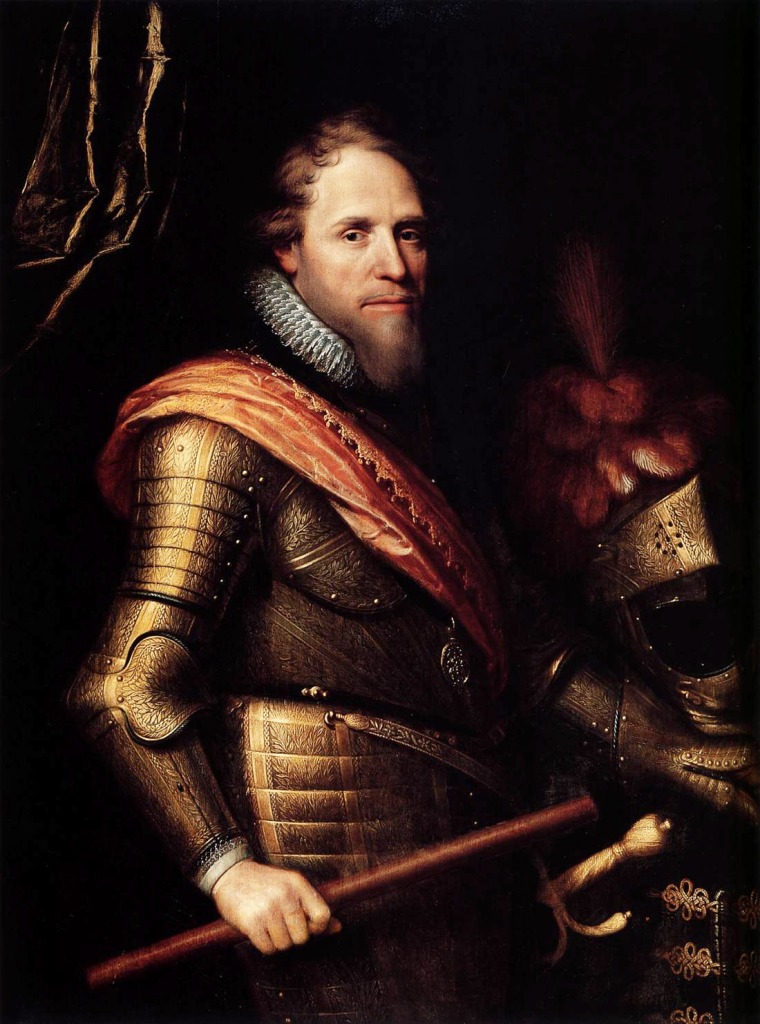
Like Tartaglia, Benedetti, dal Monte, and Galileo, Stevin was heavily influenced by the sixteenth-century renaissance of the works of Archimedes. In 1586, taking up Archimedean themes he published three books in a single volume, De Beghinselen der Weeghconst (The Principles of the Art of Weighing), De Weeghdaet (The Act of Weighing), both of which are on statics, and Beghinselen des Waterwichts (The Principles of Hydrostatics), on hydrostatics, and an Anhang (appendix).
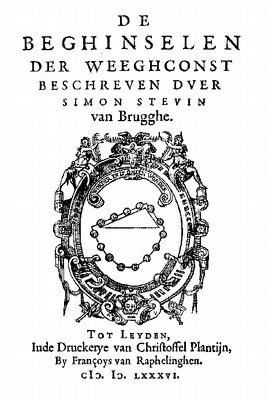
This was published by Françoys van Raphelinghen (1539–1597)in Leiden and was printed in the workshop of Christoffel Platijn (c. 1520–1589). Both his work in statics and in hydrostatics played a significant role in the development of physics in the seventeenth century. Today we will look at his work on statics, returning to the hydrostatics in a later episode.
De Beghinselen der Weeghconst is dedicated to The Holy Roman Emperor Rudolf II (1552–1612) and opens with an explanation of the importance of the Dutch language and why he is using it instead of Latin to write science . This makes Stevin one of the earliest to write scientific texts in the vernacular instead of in academic Latin, a trend that would famously be followed by others in the seventeenth century such as Galileo and Descartes. Stevin coined many scientific terms in Dutch some of which are still in use today. Like Euclid’s Elements it set out in elementary terms, that which is given, primitive terms (those requiring no proof), propositions and proofs, which are carried out in Euclidean geometry. The volume is divided into two books.
Book I:
- Definitions and primitive terms
- Propositions 1–4 Law of the lever
- Propositions 5–12 Equilibrium of a balance with weights
- Propositions 13–18 Continuation with lifting weights, two supports
- Proposition 19 Equilibrium on an inclined plane, with clootcrans, or wreath
of spheres
- Propositions 20–28 Balance with unequal weights, hanging in the air
Book II:
- Propositions 1–6 Centres of gravity of plain figures (triangle, regular figures)
- Propositions 7–13 Trapezoids, parabolas
- Propositions 14–24 Centre of gravity of a body (columns, pyramids)
- The act of weighing
- The principles of hydrostatics
- Appendix
In 1605, the book was republished as Byvough der weeghconst.
As already noted Stevin’s work was strongly Archimedean, rejecting the prevailing Aristotelian philosophy totally. His most notable result was his “proof” of the law of the inclined plane this is his Proposition 19 with its famous clootcrans or wreath of spheres., the illustration for which adorned the title page of the book.
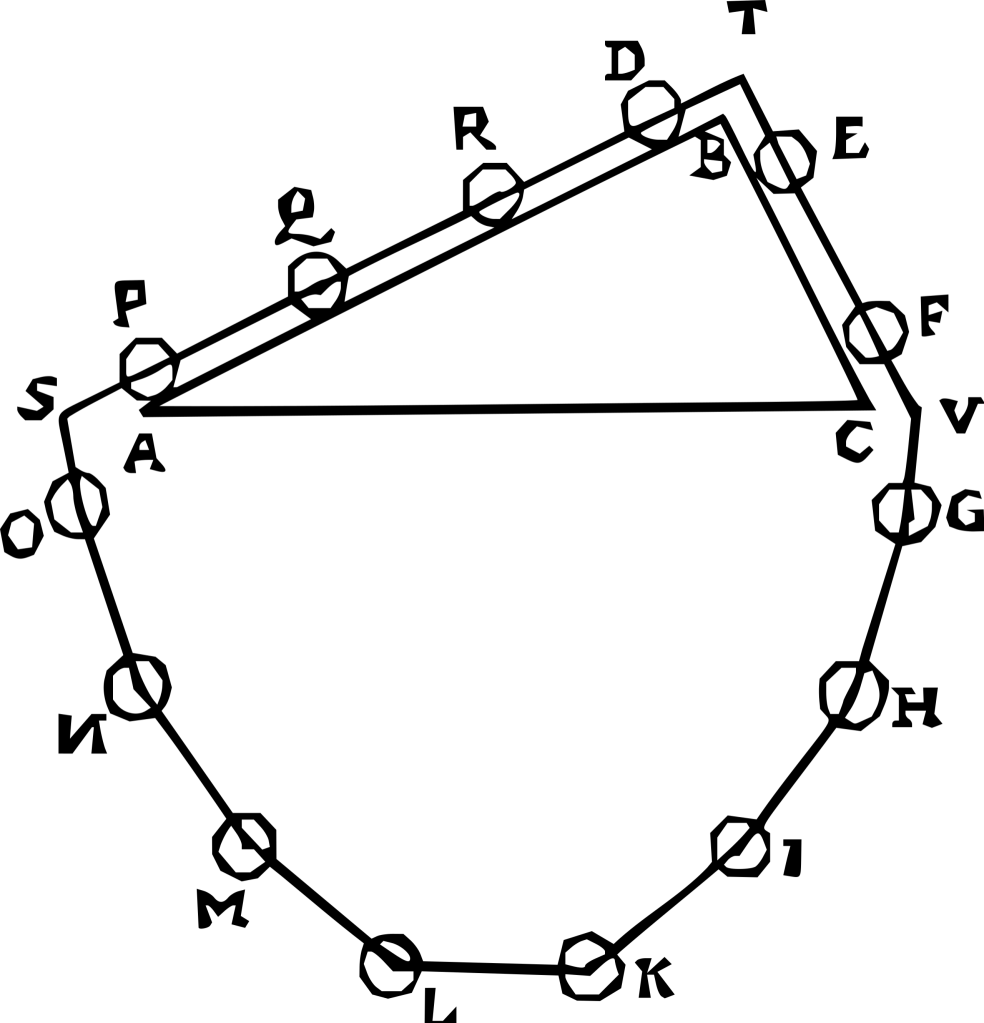
The clootcrans, as conceived by Stevin, consists of two inclined planes (AB and BC), of which one is twice the length of the other. A wreath of spheres placed on a string is hung around the triangle ABC, all friction being disregarded. The wreath will not begin to rotate by itself, and the lower section GH . . . MNO, being symmetrical, may be disregarded. It is thus apparent that the pull toward the left exerted by the four spheres that lie along AB must be equal to the pull to the right exerted by the two spheres that lie along BC–or, in other words, that the effective component of gravity is inversely proportional to the length of the inclined plane. If one of the inclined planes is then placed vertically, the ratio between the component along the inclined plane and the total force of gravity becomes obvious. This is, in principle, the theory of the parallelogram of forces. (M. G. J. Minnaert DSB)
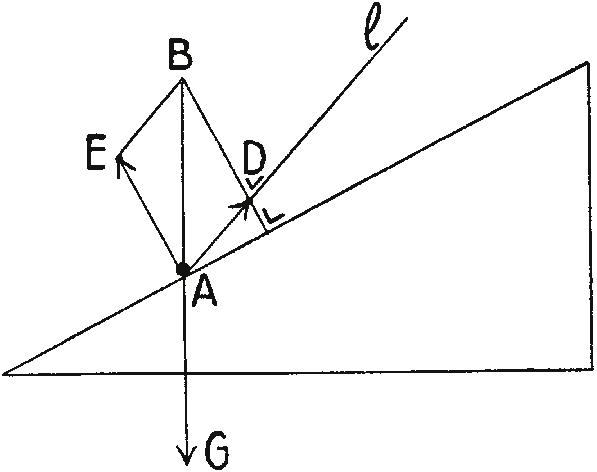
Simon Stevin’s illustration [47] of the vector character of a force that is due to the weight G of a mass on a hillside with inclination. As indicated, a force can be decomposed into components. One can add vectors such as D, E, and B as their sum component-wise along Cartesian horizontal and vertical axes or, alternatively, use the parallelogram rule for the D and E (arrows) to obtain B. Because Stevin’s plot is in a two-dimensional plane, B can be decomposed into, for instance, the two vectors D and E Source
Stevin was so delighted with his clootcrans “proof” that he used the diagram of his proof as a seal on his letters, a mark on his instruments, and as a vignette on the title pages of his books.
I have put proof here in quotation marks, although the law itself is correct and totally valid, because Stevin’s statement that the wreath will not begin to rotate by itself, is based on his unproven rejection of the possibility of perpetual motion.
The Anhang to the book contains the protocol of an interesting episode related to the history of the laws of fall. According to Galileo’s amanuensis Vincenzo Viviani (1622–1703) in his highly dubious biographical notes about his mentor, Galileo dropped balls off the leaning tower of Pisa in order to prove Aristotle wrong. Whilst this story is disputed by historians, as we saw in a previous episode other Pisan professors did throw random objects out of high windows at the university. We also saw in another earlier episode that the Neo-Platonist, John Philoponus (c. 490–c. 570 CE) really did drop objects of differing weight from a tower and concluded that they fall almost at the same speed:
“if one lets fall simultaneously from the same height two bodies differing greatly in weight, one will find that the ratio of their times of motion does not correspond does not correspond to the ration of their weights, but that the difference in time is a very small one” (Philoponus In Physica, 683, 17).
Some time before 1586 Simon Stevin joined the club of object droppers. As he reports in the Anhang he and the Dutch nobleman and scholar Johan Cornets de Groot (1554–1640) (father of the legal scholar, Hugo Grotius (1583–1645)) dropped two lead balls of equal size, but one weighing ten times as much as the other from the tower of the Nieuwe Kerk in delft onto a wooden platform below. According to Stevin the acoustic signal indicated that the two balls landed simultaneously. Although lacking in scientific rigour, the experiment showed that Aristotle was wrong and that bodies of the same material fall at the same speed.
Let us take (as the highly educated Jan Cornets de Groot, the diligent researcher of the mysteries of Nature, and I have done) two balls of lead, the one ten times bigger and heavier than the other, and let them drop together from 30 feet high, and it will show, that the lightest ball is not ten times longer under way than the heaviest, but they fall together at the same time on the ground. … This proves that Aristotle is wrong
Because he wrote in Dutch and not Latin, mainstream texts on the history of science have tended to ignore Simon Stevin’s work. However, his books were translated into both French and Latin, the latter by Willebrord Snel van Royen (1580–1626), both he and his father Rudolph (1546–1613) had been friend and colleagues of Stevin in Leiden. Stevin’s works were well known to the French physicists in the middle of the seventeenth century, several of whom, most notably Descartes, travelled and studied in the Netherlands. Through these contacts Stevin’s work had an impact on the development of physics.